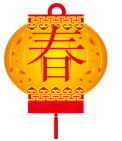
Deutsch-Chinesische Enzyklopädie, 德汉百科
 Spring Festival
Spring Festival


Drachentanz ist eine Form des traditionellen Tanzes und der Performance in der chinesischen Kultur. Wie der Löwentanz findet er am häufigsten bei offiziellen Feiern statt. Der Tanz wird von einem Team erfahrener Tänzerinnen und Tänzer ausgeführt, die die lange, flexible Figur eines Drachen mit Hilfe von Stöcken, die in regelmäßigen Abständen entlang der Länge des Drachens positioniert worden sind, manipulieren. Das Tanzteam simuliert die imaginären Bewegungen dieses Flussgeistes in gewundener, wellenförmiger Weise.
Der Drachentanz wird oft während des chinesischen Neujahrsfestes aufgeführt. Chinesische Drachen sind ein Symbol der chinesischen Kultur, und man glaubt, dass sie den Menschen Glück bringen, deshalb, je länger der Drache im Tanz ist, desto mehr Glück bringt er der Gemeinschaft. Man glaubt auch, dass Drachen Eigenschaften besitzen, die große Macht, Würde, Fruchtbarkeit, Weisheit und Glückseligkeit beinhalten. Die Erscheinung eines Drachen ist furchterregend und mutig, aber er hat eine wohlwollende Gesinnung, und er war ein Emblem, um die kaiserliche Autorität zu repräsentieren. Die Bewegungen in einer Performance symbolisieren traditionell historische Rollen von Drachen, die Macht und Würde demonstrieren.

腊肠的材料包括猪肉和肠衣[1]。先将猪肉剁碎,再按照所需的肥瘦肉比例加以混和,并加入盐、糖和酱油等调味料,然后把肉泥灌入肠衣内,再经过压缩,并把肉肠用绳子分截成所需长度后截断,于其中一端打结,另一端加上吊挂用的绳子,再采取天然风干或热风干燥的方法,使腊肠脱水以便保存。
腊肠与其他腊味相比,因为腊肠的猪肉馅料有肠衣包覆,猪肉的油脂不易流出。在广东和香港,腊肠是制作腊味饭的重要材料,原条腊肠被放在米饭上煮熟。煮熟后的腊肠油份饱满,当切开或咬开后,充满腊味气味的油脂便流出来,使米饭都带有腊味的味道。腊肠卷是以完条腊肠制作的包子。腊肠可切片与其他食材一起作为菜肴,腊肠也是制作多种粤式食品的材料,包括生炒糯米饭、糯米鸡和萝卜糕等。

腊(xī là 同“臘”)肉是指肉经腌制后再经过烘烤(或日光下曝晒)的过程所制成的加工品。腊肉的防腐能力强,能延长保存时间,并增添特有的风味,这是与咸肉的主要区别。腊肉并非因为在腊月所制,而为腊肉,腊月的腊(là)与腊肉的腊(xī)在古文里并非同一个字,亦即,腊月的腊是繁体的腊,而腊肉的腊本来就是腊月的腊的简化字。所以,腊肉之所以称为腊肉,至于为什么现在人们都读là,而不读xī,除了简化字的原因使两个字没有了区别以外,可能确实跟腊肉一般都在腊月里制作以待年夜饭之用有关。
腊肉在中国南北均有出产,南方以腌腊猪肉较多,北方以腌牛肉为主。腊肉种类纷呈,同一品种,又因产地、加工方法等的不同而各具特色。
以原料分,有猪肉、羊肉及其脏器和鸡、鸭、鱼等之分;以产地而论,有广东、湖南、云南、四川等之别;因所选原料部位等的不同,又有许多品种。著名的品种有广式腊肉、湖南腊肉和四川腊肉。
广式腊肉以腊腩条最闻名,是以猪的肋条肉为原料经腌制、烘烤而成,具有选料严格、制作精细、色泽金黄、条形整齐、芬芳醇厚、甘香爽口等特点;
湖南腊肉,亦称三湘腊肉,是选用皮薄、肉嫩、体重适宜的宁乡猪为原料,经切条、配制辅料,腌渍、洗盐、晾干和熏制六道工序加工而成,其特点是皮色红黄、脂肪似腊、肌肉棕红、咸淡适口、熏香浓郁、食之不腻;
四川腊肉,是将肉切成5cm宽的条状,再经腌渍、洗晾、烘制而成,成品具有色红似火、香气浓郁、味道鲜美、营养丰富等特点。
此外,河南的蝴蝶腊猪头,湖北的腊猪头、腊鸡、腊鱼、腊鸭,广西的腊猪肝,陕西的腊羊肉、腊驴肉,山西长治的腊驴肉,甘肃的腊牛肉等。

Die Eisenblume, auch als Eisenbaum bekannt, ist eine Art Feuerwerkskörper aus gehämmertem geschmolzenem Eisen, der in Henan, Shanxi, Hebei und verwandten Regionen beliebt ist. Sie ist eines der nationalen immateriellen Kulturerben Chinas.
铁花,又称铁树,是一种用熔化的铁锤锤打而成的烟花,流行于河南、山西、河北及相关地区。它是中国国家级非物质文化遗产之一。
打铁花,是流传于豫晋地区的民间传统烟火,国家级非物质文化遗产之一。
打铁花是中国古代匠师们在铸造器皿过程中发现的一种民俗文化表演技艺,始于北宋,盛于明清,至今已有千余年历史。打铁花多流传于黄河中下游,以河南、山西最为流行,开封打铁花更被誉为黄河流域十大民间艺术之首。 打铁花表演时,在一处空旷场地搭出六米高的双层花棚,棚上密布新鲜柳枝,上面绑满烟花鞭炮和起货等,棚中间竖立一根六米高的老杆,使花棚总高度达到十米以上。旁边设一熔炉化铁汁,十余名表演者轮番用花棒将千余度高温的铁汁击打到棚上,形成十几米高的铁花,铁花又点燃烟花鞭炮,再配上“龙穿花”的表演,场景蔚为壮观,呈现出惊险刺激、喜庆热闹的特点。





















 Sport
Sport
 Dances
Dances

 Eat and Drink
Eat and Drink
 Holidays
Holidays
 Music
Music